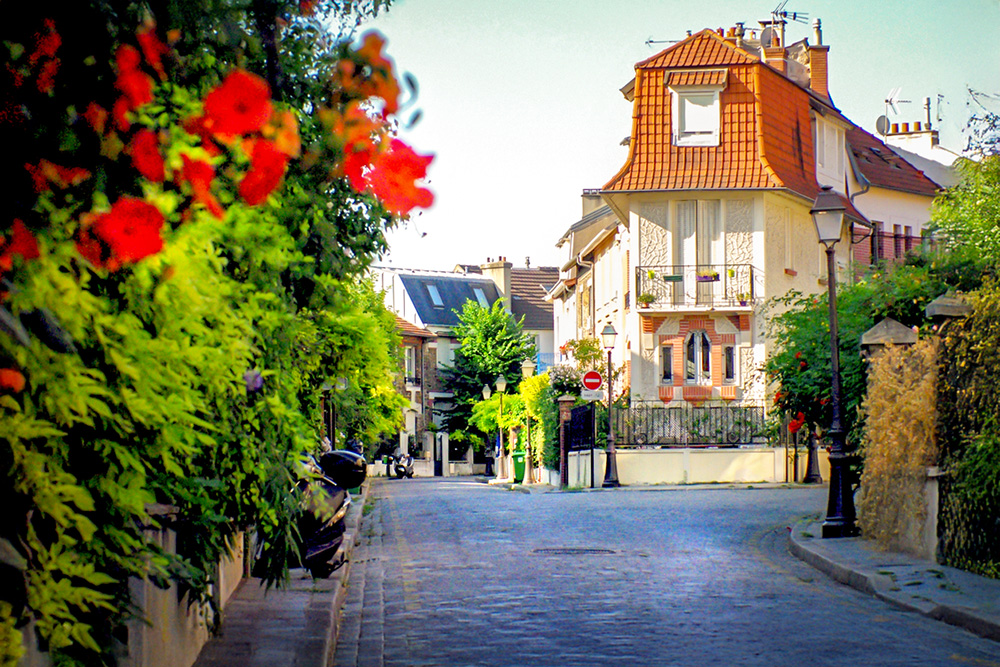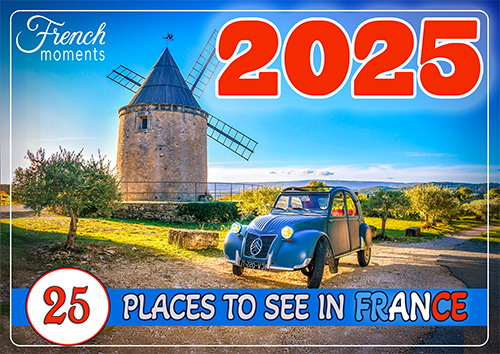La Campagne à Paris is one of the city’s best-kept secrets.
Tucked away in the 20th arrondissement, just a stone’s throw from the bustling Boulevard Périphérique, this enchanting neighbourhood feels like a world apart from the typical hustle and bustle of the French capital.
A peaceful housing development with a name that literally means “The Countryside in Paris,” it lives up to its promise with charming streets, quaint houses, and a surprising tranquillity that’s hard to find in the heart of such a vibrant metropolis.
Curious to explore this hidden gem?
Let me take you on a tour of its unique charm and fascinating history.
What is La Campagne à Paris?
It is the name given to a picturesque little district in Paris, known for its charming garden houses.
It means “The Countryside in Paris” in English.
And you’re about to understand why!
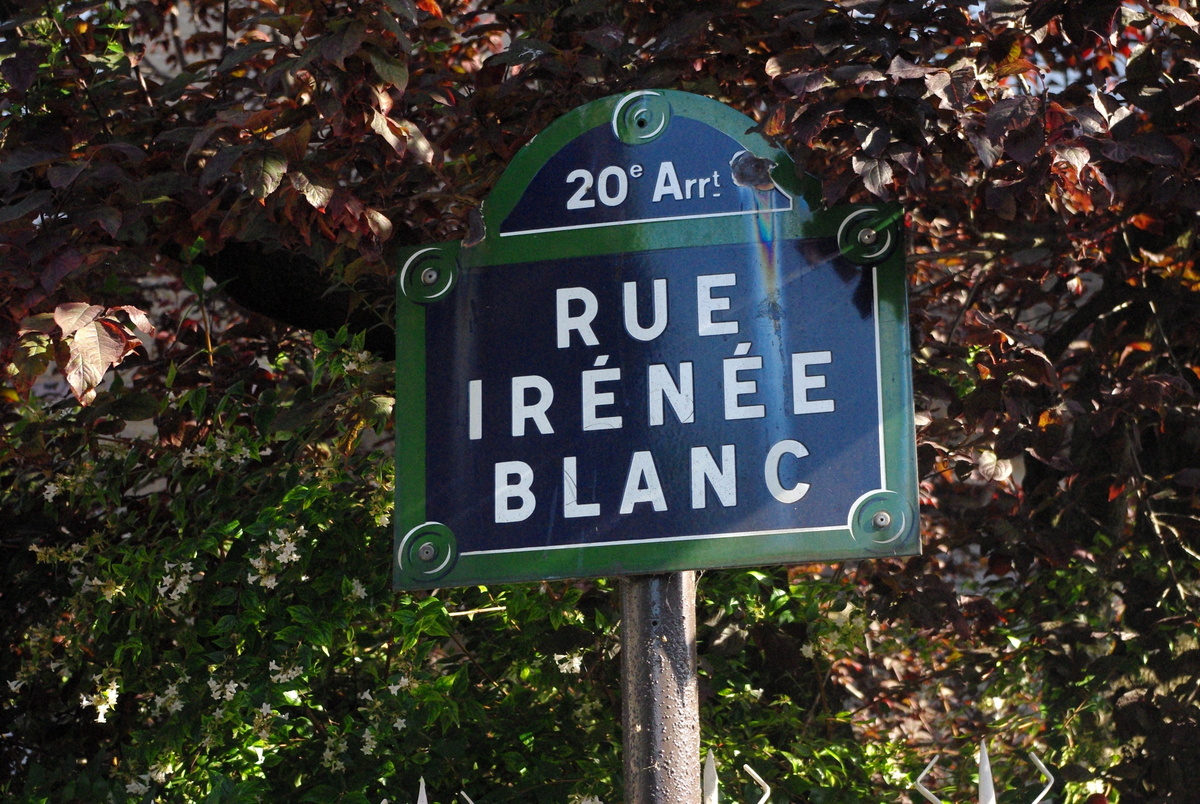
But first, let’s go back to the time of its construction.
A History Rooted in Social Ambition and Architectural Innovation
The story of La Campagne à Paris began in 1907, sparked by the vision of Pastor Sully Lombard.
His ambitious idea? To create a cooperative that would enable working-class families to own their homes.
The site chosen for this venture was once a gypsum quarry, abandoned for decades, and transformed into a small, wooded hill.
It might have stayed that way if not for the cooperative’s purchase of part of the land in 1908, paving the way for an entirely new kind of neighbourhood.
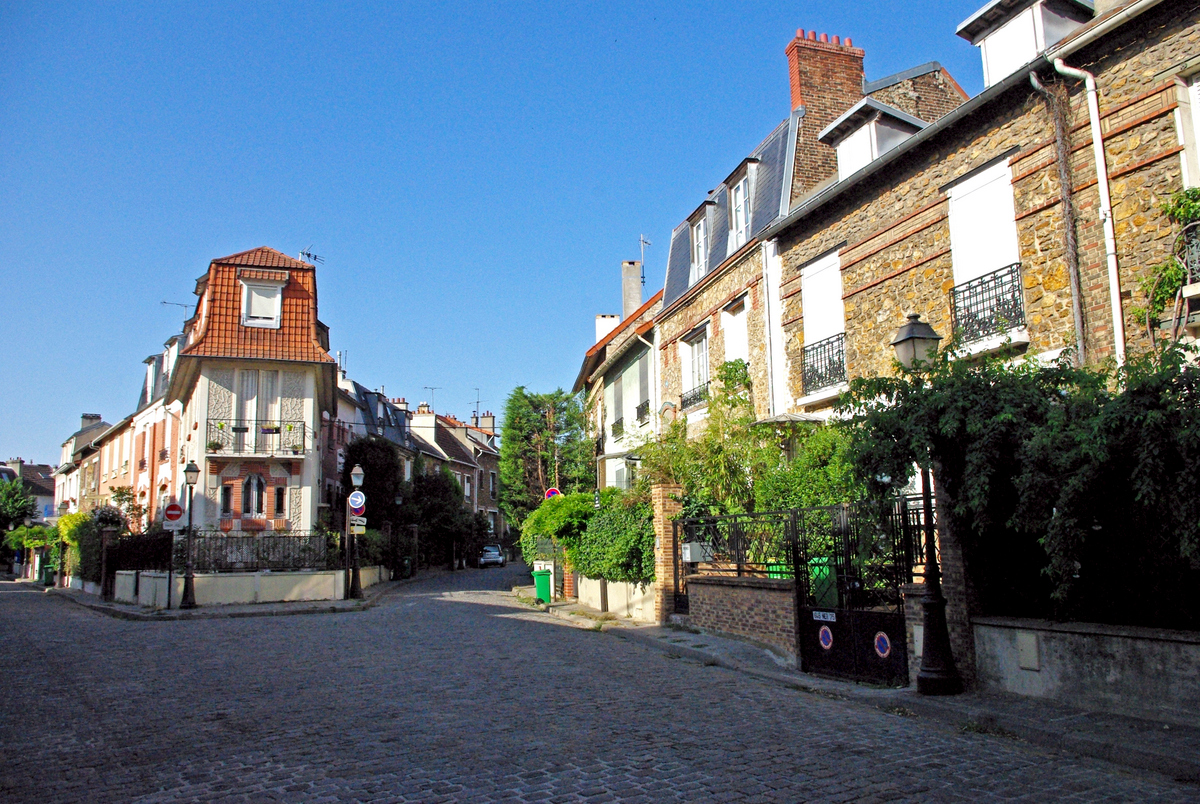
Inspired by England’s Garden City Movement
Construction began in 1911, with designs by architect Pierre Botrel, who was inspired by the garden city movement in England.
Gone were the straight, rigid streets typical of Paris – here, the roads curved naturally, following the contours of the hill.
By 1926, the first residents were settling into their new homes, all built to be bright, sturdy, and – by design – unalterable.
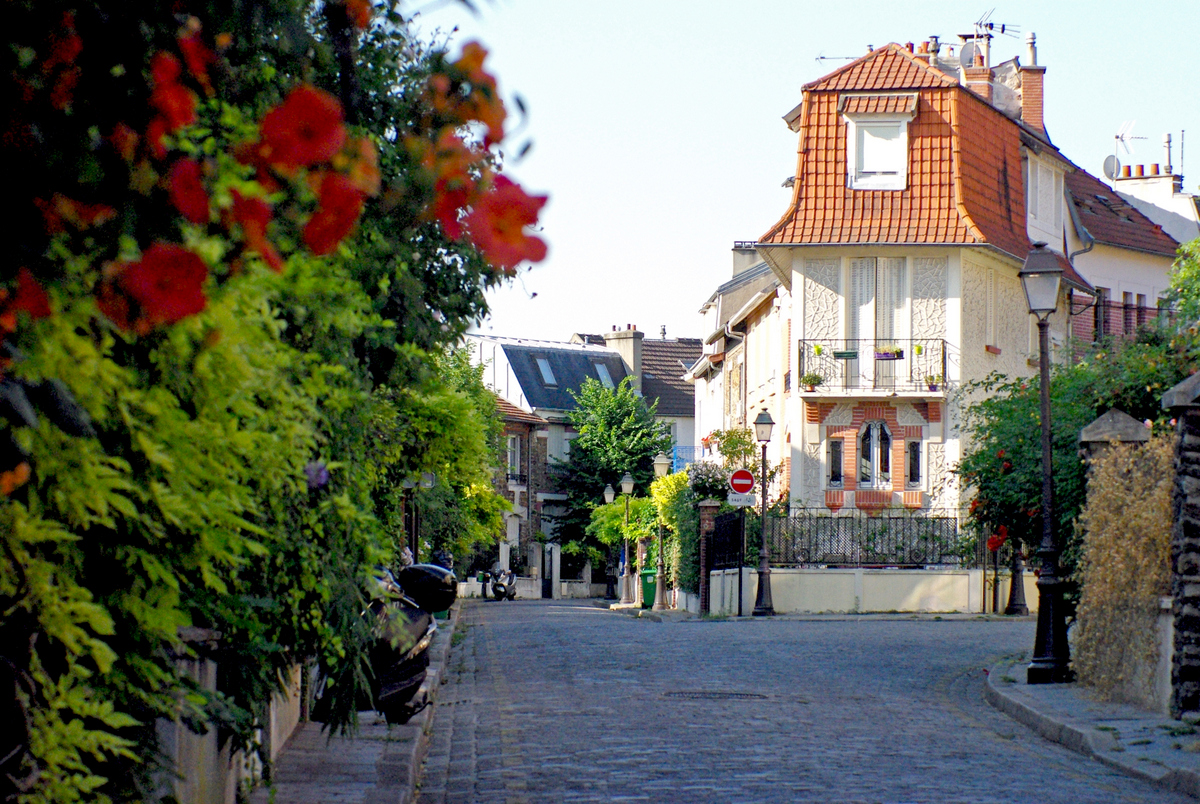
Strict Rules Put in Place
Strict rules were put in place: no extensions, no noisy or smelly businesses, and gardens were to be kept free from unsightly constructions.
This wasn’t just a neighbourhood – it was a community bound by a shared commitment to preserving its character.
Progress wasn’t always smooth.
The First World War halted construction, and costs skyrocketed from 16,000 francs per house to 37,000 francs by 1923.
Many original members of the cooperative couldn’t afford to continue, and others took their place.
Slowly but surely, the dream became a reality.
By 1928, all the houses were completed, creating a unique pocket of calm amid the growing urban sprawl of the 20th arrondissement.
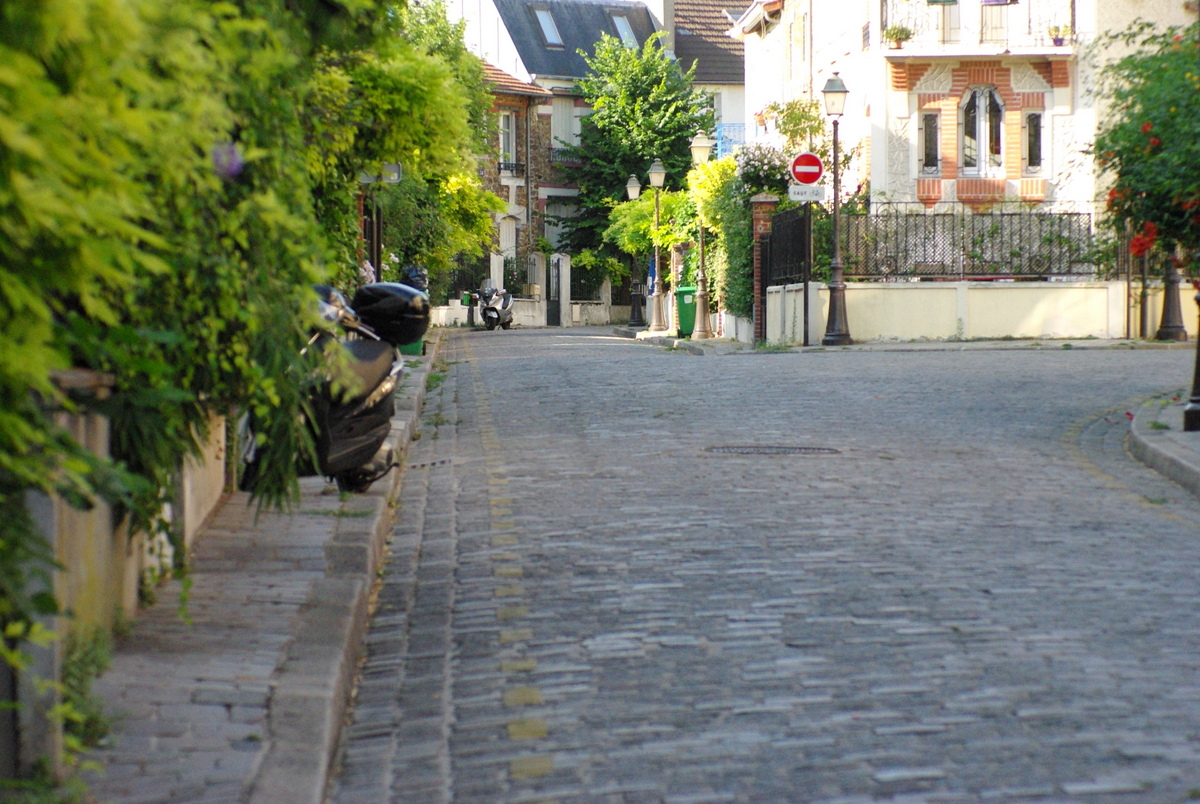
A District with Rural Charm
Though Paris eventually caught up with La Campagne à Paris, its rural charm remains.
The streets, once privately managed by a syndicate of homeowners, became part of the public domain in the 1990s, marking the end of its cooperative era.
Even so, wandering its winding lanes today, it’s easy to feel as though you’ve stepped into a quiet village – a rare and delightful escape in the heart of bustling Paris.
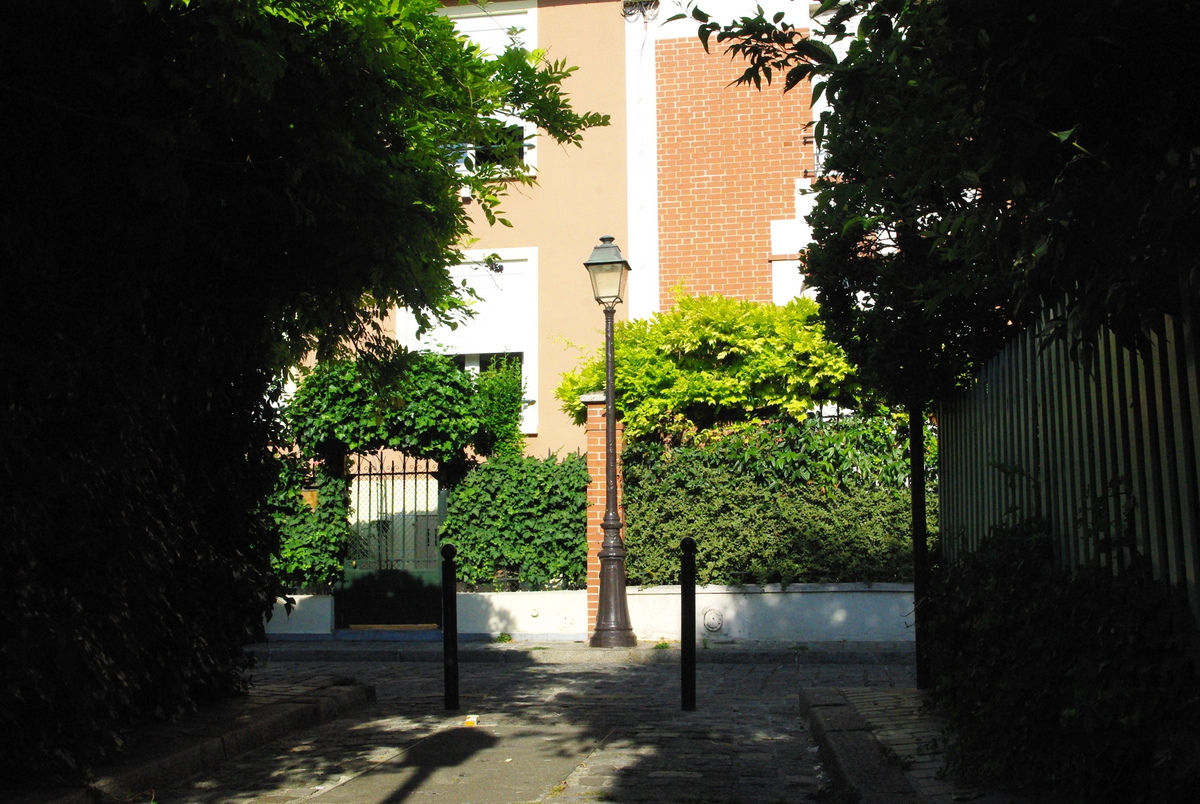
Take a stroll and Soak in the Charm
The area includes the following streets:
- rue Irénée Blanc, which leads to
- rue Jules Siegfried,
- the stairs of rue du Père Prosper Enfantin and of
- rue Mondonville.

To truly experience La Campagne à Paris, nothing beats a stroll through its picturesque streets.
Start your exploration on Rue Irénée Blanc, the neighbourhood’s main artery, which gently winds its way up the hill, lined with charming houses that look as if they belong in a countryside village.
From there, let yourself wander onto Rue Jules Siegfried, where every corner offers a postcard-perfect view.
Don’t miss the quaint stairways of Rue du Père Prosper Enfantin and Rue Mondonville.
These steps add an almost cinematic quality to the area, connecting different levels of the neighbourhood and offering delightful perspectives of the surrounding streets.
As you climb, look around – the ivy-clad walls and tiny, flower-filled gardens seem to tell their own stories.
Paved streets, colourful shutters, climbing roses, and plant-covered facades give this neighbourhood a serene, almost dreamlike quality.
Many of the houses are modest yet bursting with character, each unique in its details.
You’ll spot ornate ironwork gates, wooden doors with vintage knockers, and window boxes brimming with geraniums and lavender.
In spring and summer, the scent of jasmine and other blooms fills the air, making every turn feel like a hidden treasure.
The most picturesque spot – and one you won’t want to miss – is at the junction of Rue Irénée Blanc and Rue Jules Siegfried, the heart of this idyllic housing development.
This corner perfectly encapsulates the spirit of La Campagne à Paris, with its harmonious blend of rustic charm and urban tranquillity.
It’s no surprise that this spot has become a favourite for Instagrammers seeking a unique slice of Paris away from the crowds.
As you wander, don’t rush.
Take your time to notice the little things – the way sunlight filters through the trees, the cheerful blue and green shutters, or the chirping of birds that adds to the countryside illusion.
This is a place where the pace slows down, and Paris reveals a softer, more intimate side.
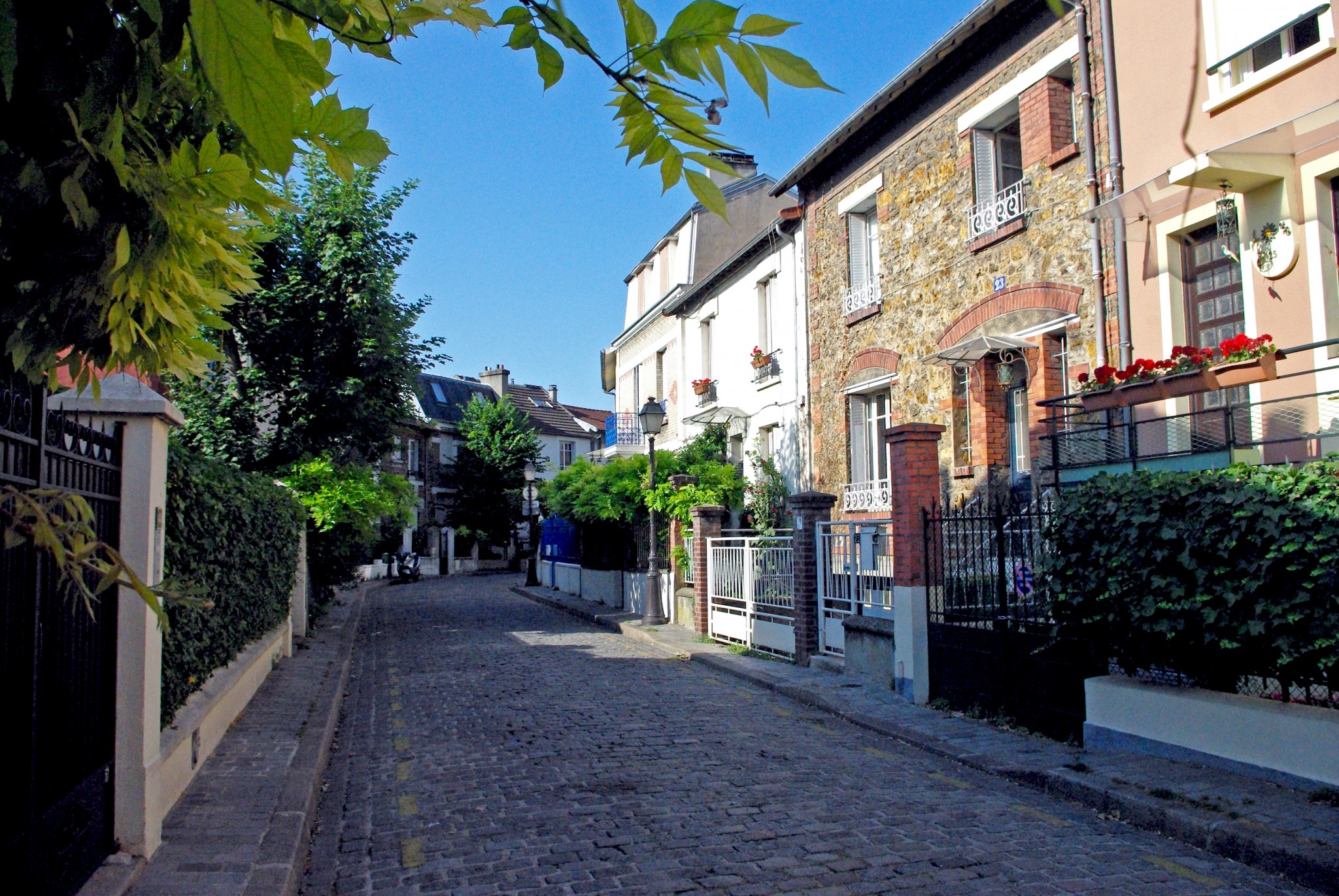
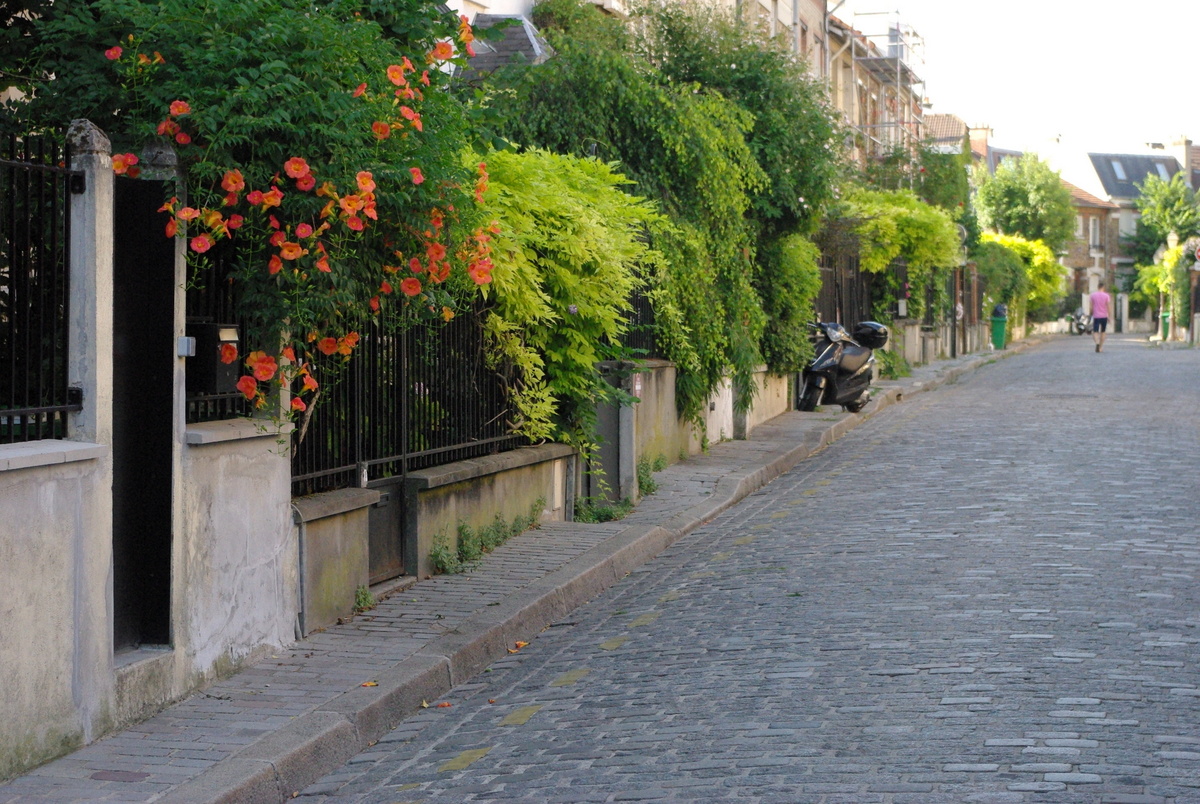
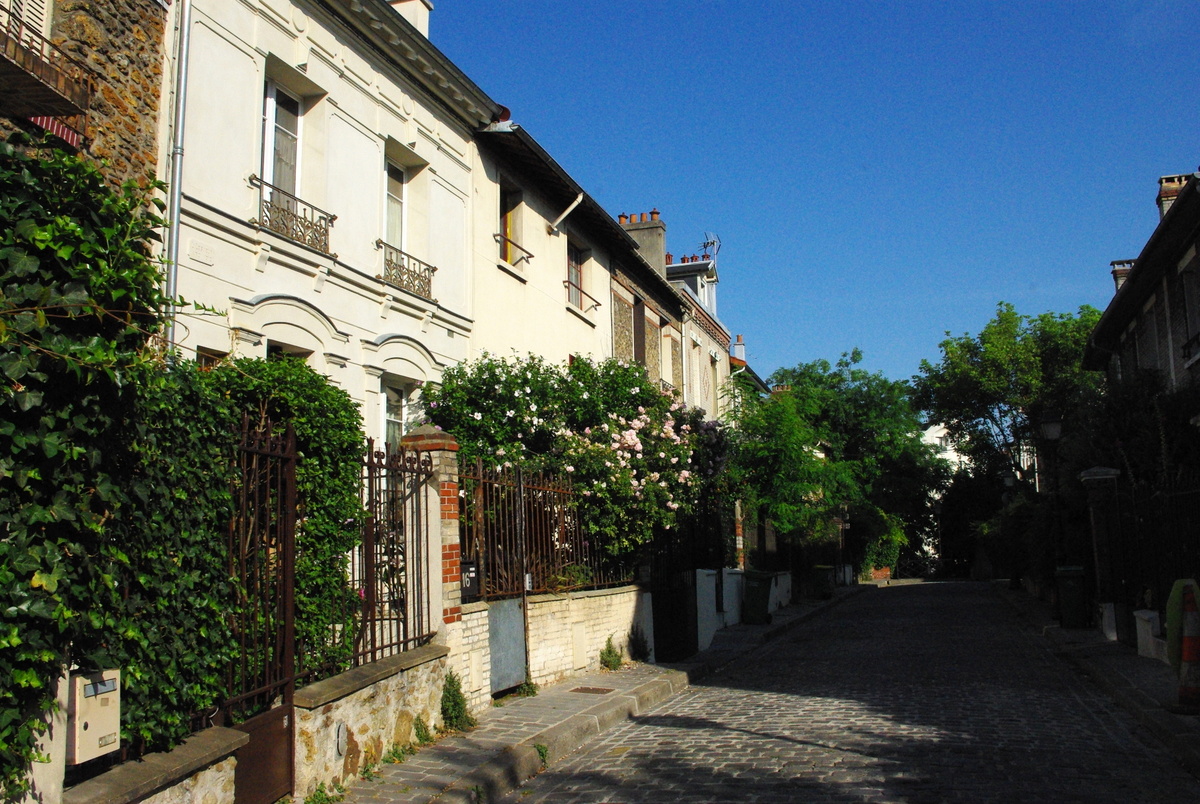
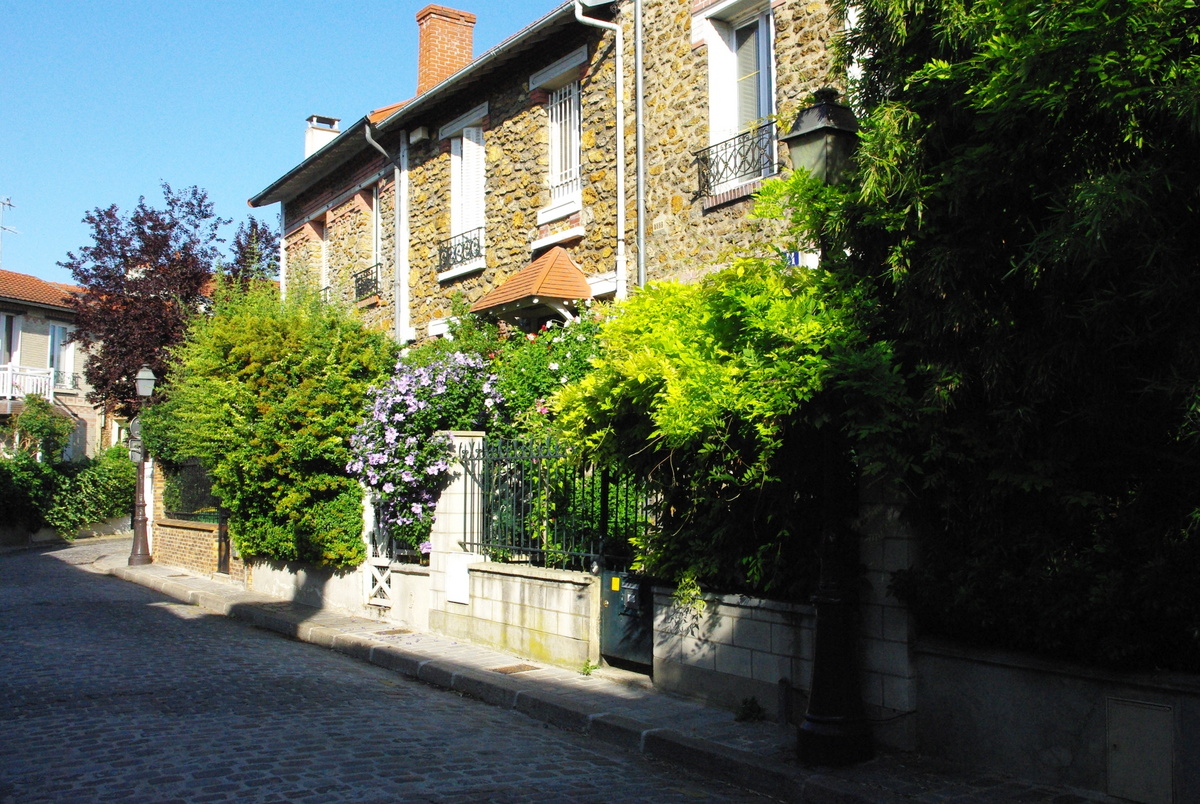
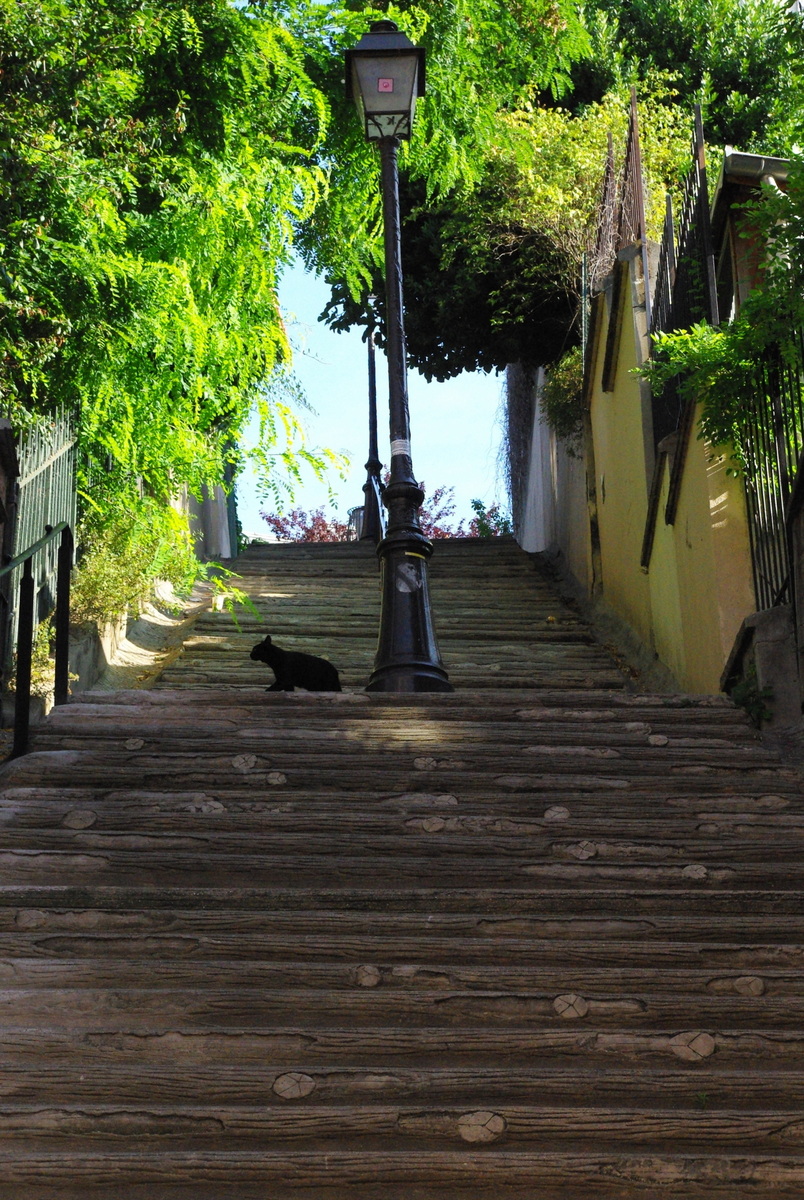
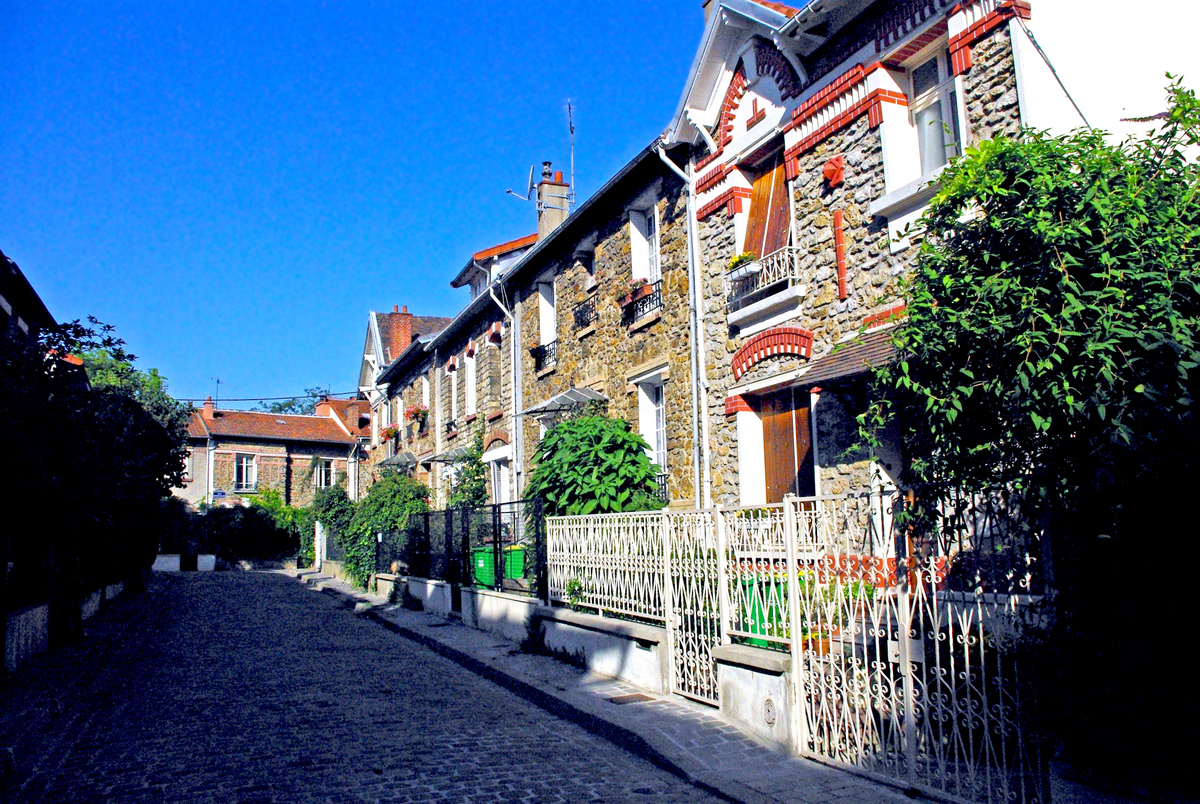
Recently the district was featured in the movie ‘Le Petit Nicolas’ by Laurent Tirard (2009).
Where can I find La Campagne à Paris?
The neighbourhood of La Campagne à Paris is situated to the northwest of Place de la Porte de Bagnolet.
It is easily accessible by métro (line 3, station ‘Porte de Bagnolet’).
Check out the Google Map:

